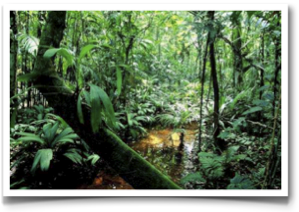Sicirec - Definitions
Forests and carbon capture
Photosynthesis and respiration are the main processes accounting for the capture and release of carbon dioxide by forests.
Using the energy of sunlight, photosynthesis converts water and carbon dioxide into carbohydrates and oxygen.
The reversed process mainly takes place at night when glucose is converted into CO2 and water vapour through a process of combustion.
Mature forests do not capture extra CO2. There is a balance between capture (growth) and release (decay). Young, growing forests, which include forest plantations, do capture CO2.
Because trees lose leaves and branches, part of the captured carbon is released during growth. However, the majority remains caught in the trees.
Depending on, amongst others, age, climate zone, type of forest and soil, a hectare of trees captures 1 to 10 tonnes of CO2 per year.
As an indication, trees in Europe capture on average 200 tonnes of CO2 per hectare over a period of 40 years.
Besides the CO2 trees capture, they have a positive influence on the carbon capture of the entire biosphere (including shrubs, other plants and soil) in the surrounding area, both under- and above ground.

Thus, the accumulated carbon capture of a hectare of forest can range from over 300 tonnes in Europe to over 600 tonnes in the tropics.
CO2 captured in wood is released only when the wood decays or is burned. By creating durable products out of the timber, long term carbon capture is ensured.

